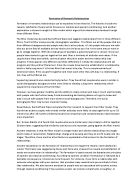Further evidence supporting the match hypothesis was conducted at a later date (1971) by Silverman. The procedure involved observing unmarried couples (18-22 years of age) in a naturalistic dating setting (e.g. bars, social events, restaurant) and getting two male and female observers rated the opposite sex on a 5 point scale. The results showed that there was an extreme similarity between attractiveness scores of the couple members. Furthermore, the more similar the attractiveness scores of the couple members, the happier they seemed. This research is good because it was conducted in a naturalistic setting which means it is high in ecological validity, this suggest that the match hypothesis can be used in real life situations. However, it could be argued that the couples with similar attraction scores were not ‘happier’ and the experimenter’s judgment of ‘happier’ may not be accurate, instead entirely subjective (experimenter bias). Another limitation of this research is that the halo effect may have reduced external validity of the experiment as the halo from one individual might have influenced the other, for example the experimenter may assume they are both ‘happy’ due to the association of positive traits to an attractive individual. In addition to this, a reduction in internal validity may have occurred because of experimenter bias and subjectivity of the attractiveness ratings. Another issue with the research is that it is culturally specific (western society) which means findings cannot be generalised to a wider population.
Another second theory explaining relationship formation is the filter model developed by Kerckhoff and Davies (1962). This theory argues that relationships develop through three separate filters and different factors are significant at different times. It assumes that we have a ‘field of availables’ which are the people we could have a relationship, later on this is filtered and narrowed down into the ‘field of desirables’ (those we believe to be potential partners).
The first filter involves social demographic variables; this filter is largely part of our unconscious thoughts and filters people through their location they live, the group circles they spend time in, their economic background and age. This means that there is actually a small section of people as many others would not go through the first filter. Individual characteristics do not have a large influence at this stage as it comes into the next filter.
The second filter involves similarity of attitudes and values and is often the stage where individuals start dating. When examined more closely, those who share different attitudes and values are filtered out because it is often hard to communicate with one another. If compatible they often share the same beliefs and views about the world and can communicate much more easily.
Once a couple is established the third filter comes into play, this is the complementarity of emotional needs. Individuals will assess whether their needs are being met by their partner and whether they can fulfil their partner’s needs. This will determine whether the relationship continues or is filtered out.
The filter model offers a good explanation as to what factors are influential in a relationship and when they might come into play, for example having similar attitudes may be less important in the later stages of a relationship or social demographic values may not be an issue later on. In addition to this the model explains how a relationship develops over time and what we most specifically look for at these moments in time, this is clearly evident in daily life which gives us the impression that the model makes logical sense. However, due to the model being broken up into stages it simply fails to reflect the fluidity and dynamic nature of a relationship and almost assumes humans develop relationships with a checklist- manner. Furthermore, in real life some relationships can develop a lot faster than others and this is not reflected at all in the filter model. Another limitation of this model is that it does not reflect the more modern day and can be argued to be outdated as more people are developing relationships with people they never knew through new forms of communication, for example the internet, online dating or even blind dating.








